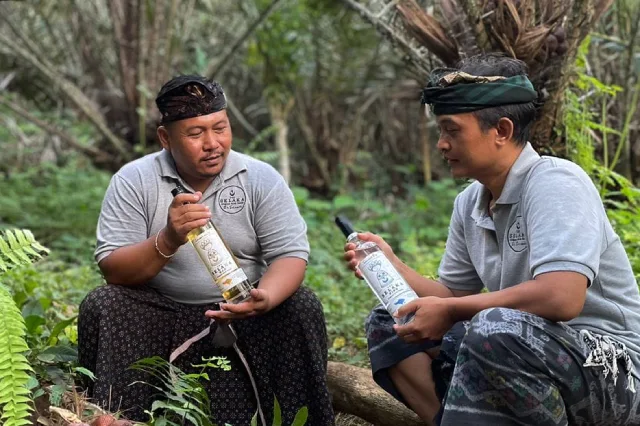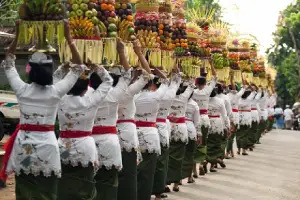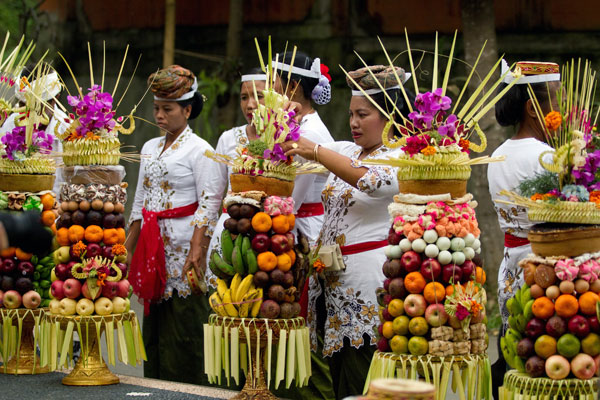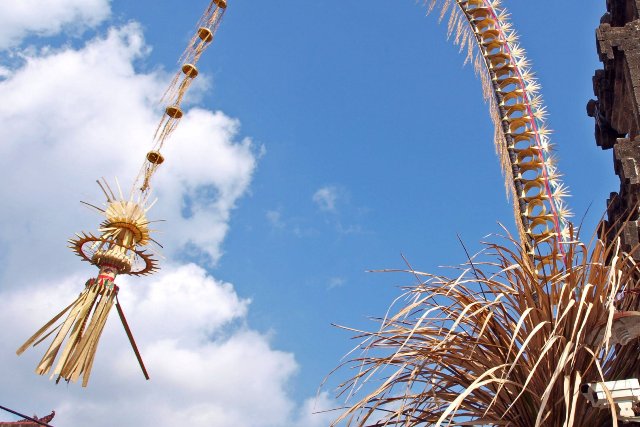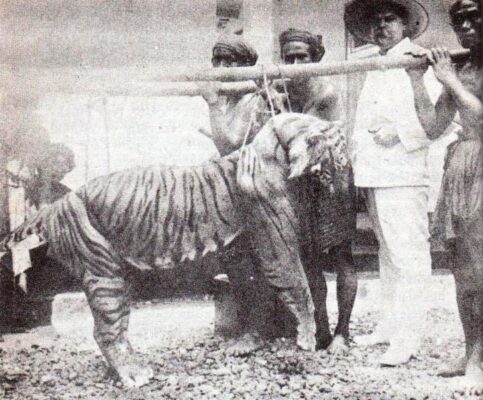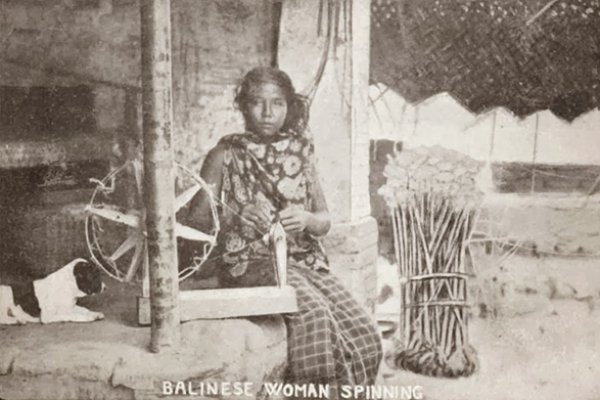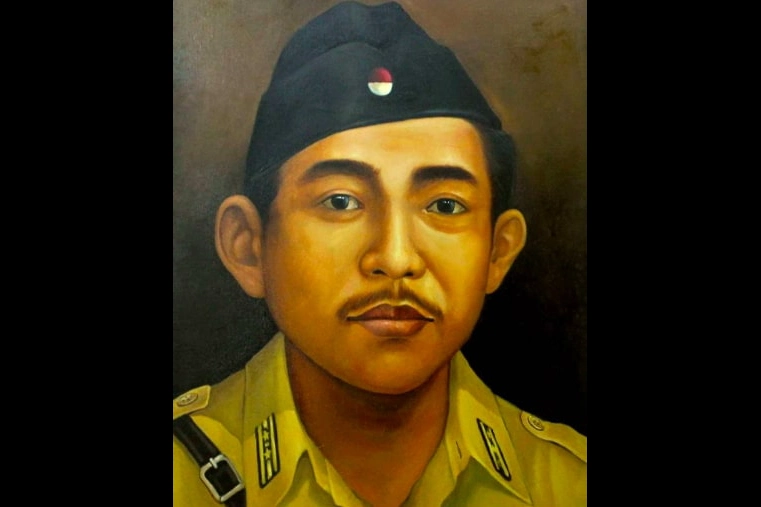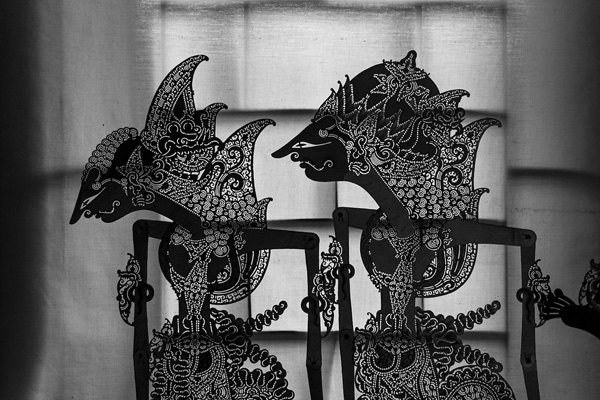Things to Do in Bali
Seeing one of Bali’s traditional dances is a “must-do experience”.
An Integral Element of Balinese Life
Balinese Dances & Traditional Performances are a dynamic form of art with a strong connection to religion. It is an important part of Balinese culture and serves as a means of connecting with the gods, either as a welcome for visiting gods or as a communication channel in certain trance dances. Every performance will begin with an offering, and dancers will pray on the day of the performance to receive Taksu, which has no direct English translation but can only be described as divine inspiration. The dances are most traditionally done on a weekly basis during temple festivals and important ceremonies at some locations designated for tourists to observe.
Many Balinese dances take their cues from the Ramayana and the Mahabarata, two Hindu epics that have served as the basis for centuries of storytelling. The tradition of these forms and movement are passed on to girls and boys from a very young age. Young Balinese children are subjected to “rigorous” learning standards and high expectations as they learn to tell tales via dance-drama. These days, visitors may take classes in traditional Balinese villages and see professional dancers perform at their resorts or private villas, sometimes accompanied by a traditional Balinese gamelan orchestra.
All parts of the body, including the face, eyes, and hands, need to move with life and grace in order to dance well and to tell stories. All around Bali, but notably in the villages of Ubud and Gianyar, you may find really talented dancers and instructors. There have been many famous dancers from Gianyar who have traveled to perform on international stages, and they often date back hundreds of years.
Selection of Traditional Balinese Dances
Kecak Fire Dance
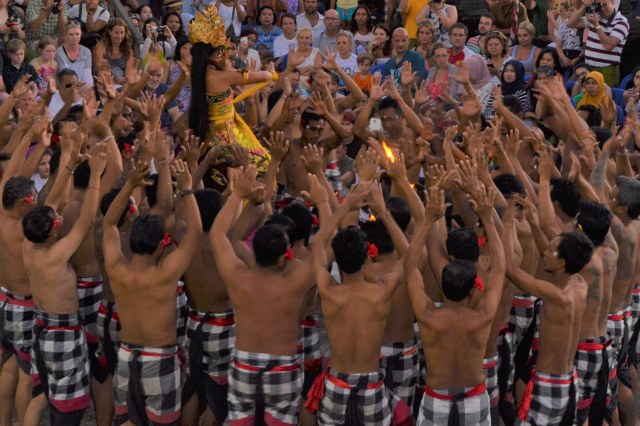
The Kecak dance, one of Bali’s most famous performances, is a stunning spectacle that features a chorus of fifty or more men and boys clothed in sarongs to portray an army of monkeys. Dancers sit in a circle, chant Chak Chak-Chak-Chak, and perform by vigorously shaking their arms and bodies. The dancers form a circle around a central performer, who reenacts the love narrative from the Hindu epic Ramayana. It shows prince Rama’s battle with the evil king in an attempt to rescue the kidnapped princess Shinta. Hanuman, the monkey general, fights with him against the king’s army. Initially, the Kecak started as a part of the Sang Hyang trance dance, which was a male-only group praying to the souls of their ancestors. But more recently, female dancers in Ubud have started performing the Kecak dance as well. The Kecak dance is best performed at night when a burning flame in the center of the circle creates an even more dramatic effect on the mystical performance. The Kecak show at Bali’s Uluwatu Temple is unmatched; it’s a beautiful performance set against the breathtaking backdrop of the ocean at sunset.
Kecak Fire Dance in Uluwatu
Barong Dance and Kris Dance
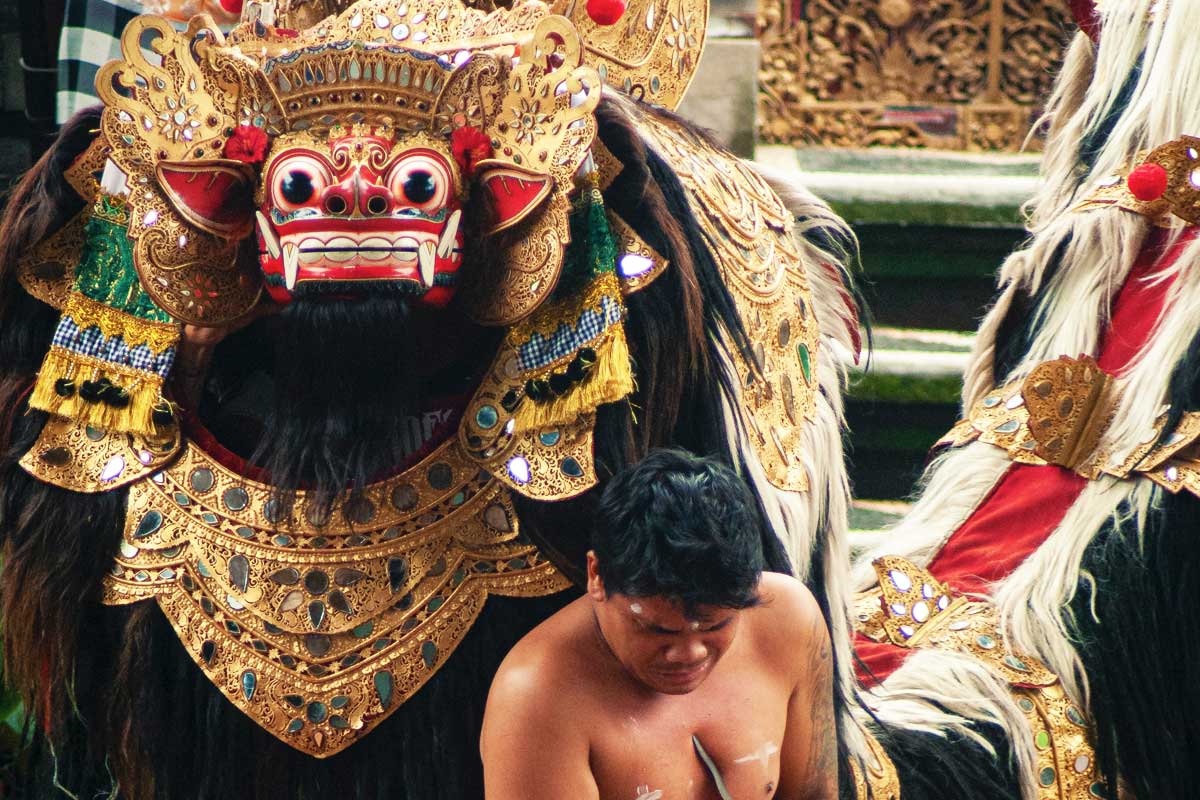
This dance depicts the struggle between good and evil. The Barong represents all that is good and plays the role of the protector. He is the leader of all good spirits and can appear in all kind of shapes but dances in his most holy form, which is the Barong Keket: a combination of a big shaggy dog and a lion. The Barong Keket is a playful spirit who loves a bit of mischief, but when confronted with the evil witch Rangda, would quickly become the powerful protector. Two dancers support the appearance of the big Barong Keket, while only one performs the role of the evil witch Rangda with big fangs and claw-like fingernails. The exhilaration of seeing a performance of the Barong and Keris dance is amplified by the gamelan’s powerful music. To close the performance, a temple priest uses prayers and holy water to awaken the dancers from their trance. Keep in mind that a live bird sacrifice may be a part of the show in order to ward off any lingering evil spirits. As the Barong makes his way from home to home during Galungan and Kuningan, onlookers may see him cleansing the area from evil influences.
Spectacular Documentary – 1930ies
Legong Dance
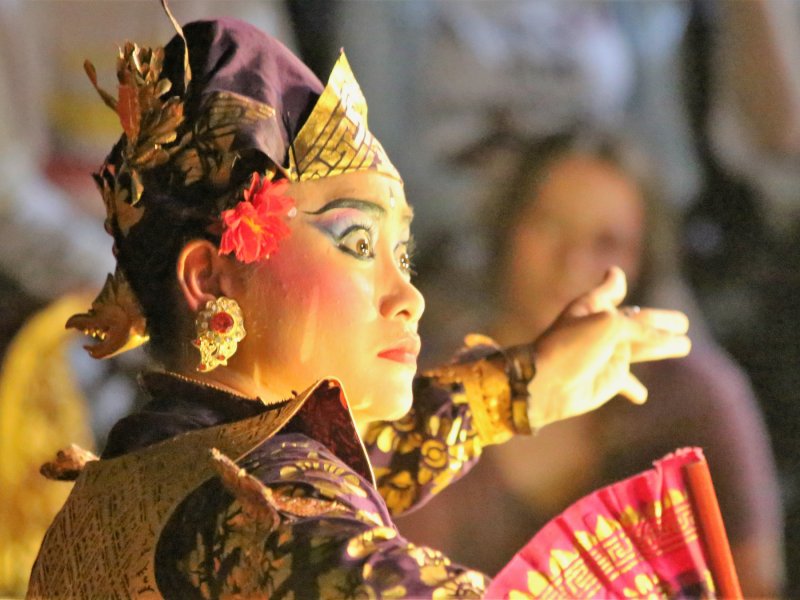
The Legong dance of Bali is often considered to be the most graceful type of dance on the island due to its complex finger gestures, difficult steps, and dramatic eye expressions.
Only ladies and young girls participate in the Legong dance, and they all dress alike in a gold sabuk or tight brocade with gold trimmings. It’s amazing to see how they keep their grace and agility intact.
The story of Rangkesari, a beautiful woman who flees into the forest to avoid being married to King Lasem, is portrayed in the dance. She wanders off into the forest and is eventually captured by Lasem, who locks her up before launching a final assault on her family. A monstrous raven attacks him, predicting his imminent death. The Legong dance depicts King Lasem’s farewell.
Baris Dance
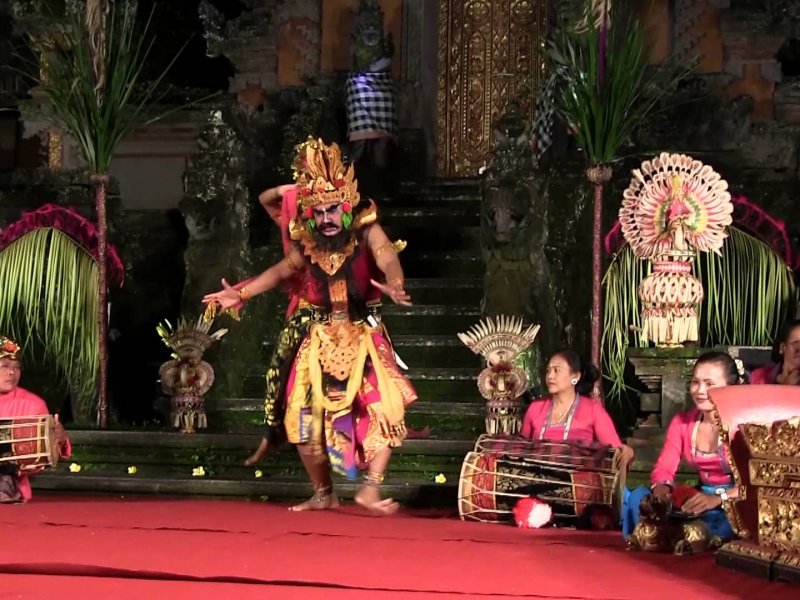
There are two distinct styles of baris dance. The non-ritual dance is often the first dance a new dancer learns and is typically performed by a single male dancer. A difficult dance in which the solo Baris dancer moves with the deliberate care of a warrior about to do battle. The solo Baris dancer wears a crown of shells, (keris) dagger and strips of golden cloth for his performance. Intense emotions of a warrior and a plea for divine aid are displayed in this dramatic performance. In contrast, a large group would perform over thirty distinct ritual baris dances, each one evoking the stance and motions of a warrior. Different types of music and motions are used in the various group formats of baris dancing.
These dances are also commonly seen at religious rituals and festivals.
Sanghyang Dance
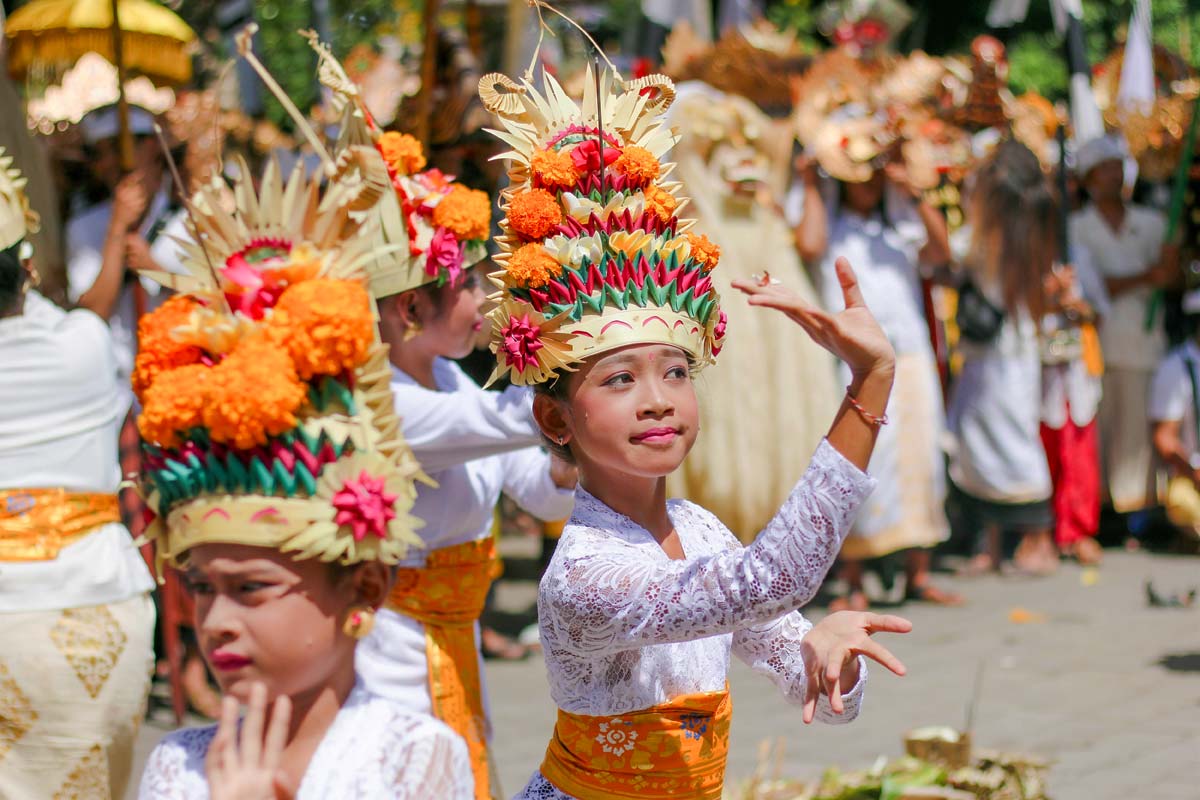
The Sanghyang dance are sacred performances that involve the divine spirit or Sanghyang to enter the dancer’s body temporarily. These dances are therefore known as dancing while in a trance. Their original purpose was to bring balance and good health by driving out evil spirits that came to earth in the form of sickness or death. The Dedari and the Jaran are the two most well known Sanghyang dances. At the end of each dance, a priest will come forward to break the dancers from their trance with prayers and holy water.
The Sanghyang Dedari involves two young female dancers put in trance at a nearby temple and carried to the place of performance to dance in perfect harmony with their eyes firmly shut. A group of male and female provide the background sound of chanting to which the young girls dance. When the chanting stops, the spell will break.
The Sanghyang Jaran, also known as the Dance of the Spirits or Fire dance, only involves male dancers in a trance, moving through a fire of coconut husks while riding a symbolic horse.
Janger Dance

The term Janger loosely translates to “infatuation”, eluding to someone passionately in love. The Janger dance depicts the blooming romance in young couples that begins by setting up a scene to greet the audience. 12 male dancers will perform the intricate kecak, and afterwards will sit across from each other on opposite sides of the stage as the female group (Janger) sings a traditional folk song before performing a slow, but fluid dance in a square formation. The young men would be sitting cross-legged and doing elaborate hand movement influenced by pencak silat (old martial art) moves. The young women would kneel and weave patterns with their arms and hands. The Janger dance is thought to have originated from female farmers singing to ease their weariness after working a long day in the fields. It has since evolved into a dance as a way to meet other young men from nearby communities. The Janger dance is a celebration and is often performed at weddings as entertainment, or at the end of harvest season.
Topeng Dance

Topeng, which translates as “mask,” is a theatrical performance in which the performers are dressed in elaborate costumes that tell classic tales of legendary kings, heroes, and myths, accompanied by an orchestra of traditional music instruments. With each variation of the Topeng, or mask dances, all the dancers imitate the character of the mask they are wearing.
The Topeng Bungkulan covers the entire face and is worn at non-speaking performances like Topeng Tua (the old man), Topeng Keras (the stubborn military man) and Topeng Manis (the kind and refined hero). Not all full-face covered masks depicts humans.
The Jauk dance is performed by a dancer wearing the mask of a demon and gloves with long scary nails. The Topeng Sibakan only covers the forehead and nose and is worn in dramas where the performers play comical figures and make jokes using the Balinese language.
Pendet Dance
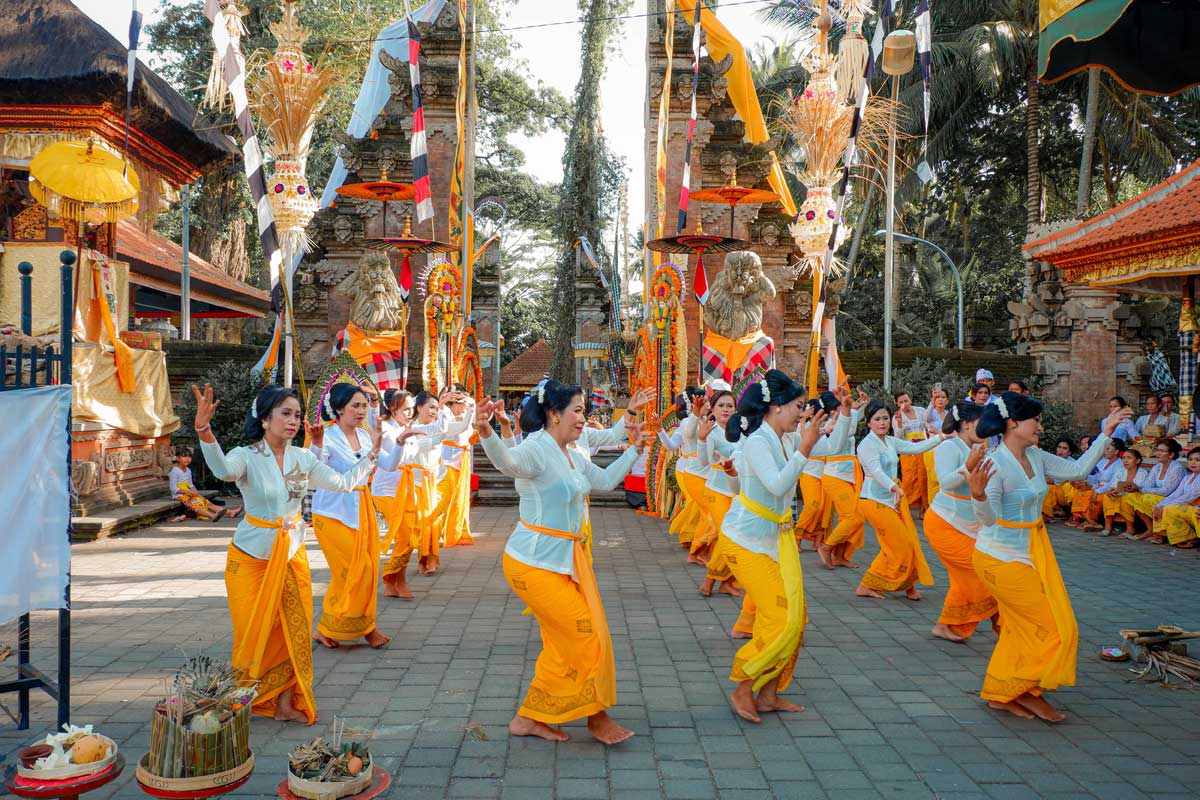
The traditional Pendet dance is performed in the courtyards of Balinese Hindu temples. Pendet is the ritual dance in which an offering is presented, consisting of simple dance movements that may be performed by anybody and taught by imitation that symbolizes purification.
Pendet is often done by young girls carrying bowls of flower petals, throwing handfuls of them into the air at certain points throughout the dance as a way to cleanse the location. It is also a dance to welcome the audience and invite spirits to enjoy the performance.
The Balinese flower offering ceremony banten or canang are presented to the shrines within the temples or compounds to express appreciation to the Gods. Pendent is different to Wali, sacred ceremonial dances, which need extensive training and are exclusively done at ritualistic events. Due to the religious importance and presence of spiritual forces, it could only be performed by select dancers.

















